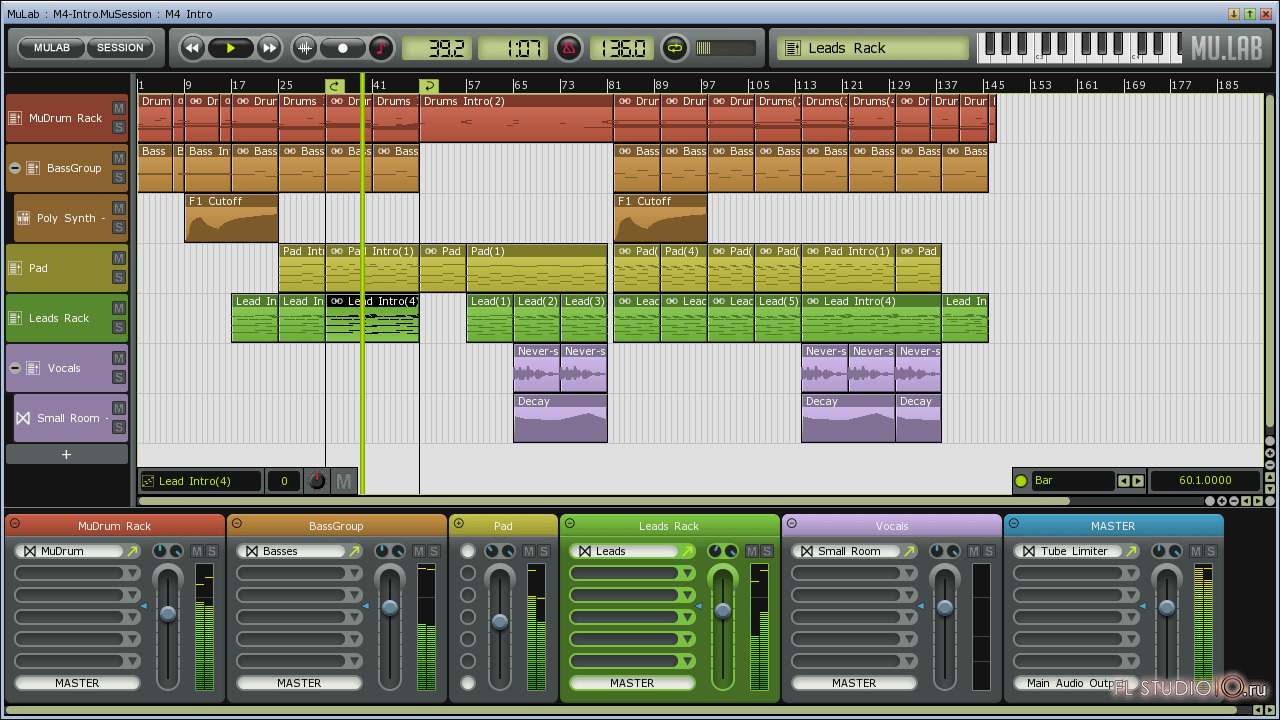
- #MULAB 7 TUTORIAL SOFTWARE#
- #MULAB 7 TUTORIAL CODE#
- #MULAB 7 TUTORIAL PLUS#
- #MULAB 7 TUTORIAL DOWNLOAD#
- #MULAB 7 TUTORIAL FREE#
But even if it’s not completely stable, it’s too good to miss. My computer is not a squeaky-clean test machine, but yours probably isn’t either, so your results may vary, but I’d suggest testing Glitch before trying to use it at a gig. It operated well at first in Ableton Live 7, but then crashed Live the second time I tried to open its panel. I couldn’t get Glitch to work reliably in Steinberg Cubase 4.5. Sixteen separate patterns are a mouse-click away, and your knob moves can be automated. Switching can happen at any sixteenth-note. When running, Glitch switches from one effect to another, either randomly or in an order that you specify.
#MULAB 7 TUTORIAL PLUS#
It has a bank of nine effects - TapeStop, Modulator, Retrigger, Shuffler, Reverser, Crusher, Gater, Delay, and Stretcher - each with four or five parameters plus a separate filter. Glitch is a VST 2.3 plug-in effect that can mangle loops in bizarre and unpredictable ways, turning a monotonous one-bar repeating riff into an endless kaleidoscope of killer weirdness.

But if you do use drum loops, but hate boring ones, you’ll love this program. Illformed Glitch (For: Windows Site: /plugins/glitch) If you never use drum loops, you may have no use for Glitch. If algorithmic composition is your thing, you could hardly ask for a better set of tools.

Csound and Blue are also compatible with general-purpose programming languages such as Python.
#MULAB 7 TUTORIAL DOWNLOAD#
Written by Steven Yi and available for download from the Csound web site, Blue doesn’t eliminate the need to type code, but it has a multitrack timeline with mute and solo buttons and many other amenities. Several “front ends” have been written to give Csound a boost into the modern era of windows and graphics.
#MULAB 7 TUTORIAL SOFTWARE#
But it’s not easy to learn, and it doesn’t interface well with any other audio software in your computer. It does lots of types of synthesis and processing it has a text-based scoring language that can run rings around a high-end MIDI sequencer and it can do 64-bit floating-point audio, which is unimaginably clean. Why would anybody still use something so primitive? Easy: Csound is arguably the most powerful and best-sounding computer music system around.
#MULAB 7 TUTORIAL CODE#
At that time, no computer could create or process audio in real time, so Csound is a text-based rendering language: You type a bunch of code and then hit the Render button to save your audio file to disk (or, these days, to listen to it immediately). You probably won’t have a use for all ten programs, but you’ll surely find something here that will ring your chimes.Ĭsound (For: Win/Mac/Linux Site: )Csound is the graybeard of music software: Its roots go back to the 1970s. The other items in this round-up are the kind that any computer-savvy musician should be able to start using quickly. Three of my choices - Csound, Pd, and SuperCollider - line up solidly in the first column: amazingly sophisticated, but they’re brain-benders, and will require hours or days of study before you’ll even get your first sound out of them.

#MULAB 7 TUTORIAL FREE#
I didn’t include this recorder in my Top Ten because the free version is limited to six tracks.Īs I looked for cool stuff to include in this article, I sometimes had to choose between programs that are extremely powerful, but not easy to use and, on the other hand, programs whose friendly look and feel make them easy to use, but that are not very powerful, and perhaps not as interesting either. If you’re using Windows, you can download MuTools Mu.Lab Free (), which is similar to GarageBand. If your computer is a recent Macintosh, you already have a very nice piece of free music software: GarageBand, which is part of Apple’s iLife suite, is on your hard drive, ready to go. Open-source software offers you some protection against that dire eventuality. As users of Opcode Studio Vision (which wasn’t open source) learned the hard way, when a company closes its doors, years of creative work in the form of sequencer files can begin to quietly rot. The big advantage is that an open-source program isn’t tied to the fortunes of any single corporate entity. Most of us lack both the specialized skills and the need to do this - but even so, open-source software is a good thing, and not just because it’s free. “Open source” means that if you’re a computer programmer, you can download the source code and modify it in whatever way you’d like.

As much as anything else, the open-source movement is a cultural jab in the eye at capitalism in general and monoliths like Microsoft in particular. Computers that run the increasingly popular Linux operating system almost always use free, open-source software. Still other programs originate in the “open-source” movement. Once in a while, a talented young developer will release a program as freeware in order to show off his programming chops and develop a buzz in the industry, a move that can lead to a full-time gig.


 0 kommentar(er)
0 kommentar(er)
